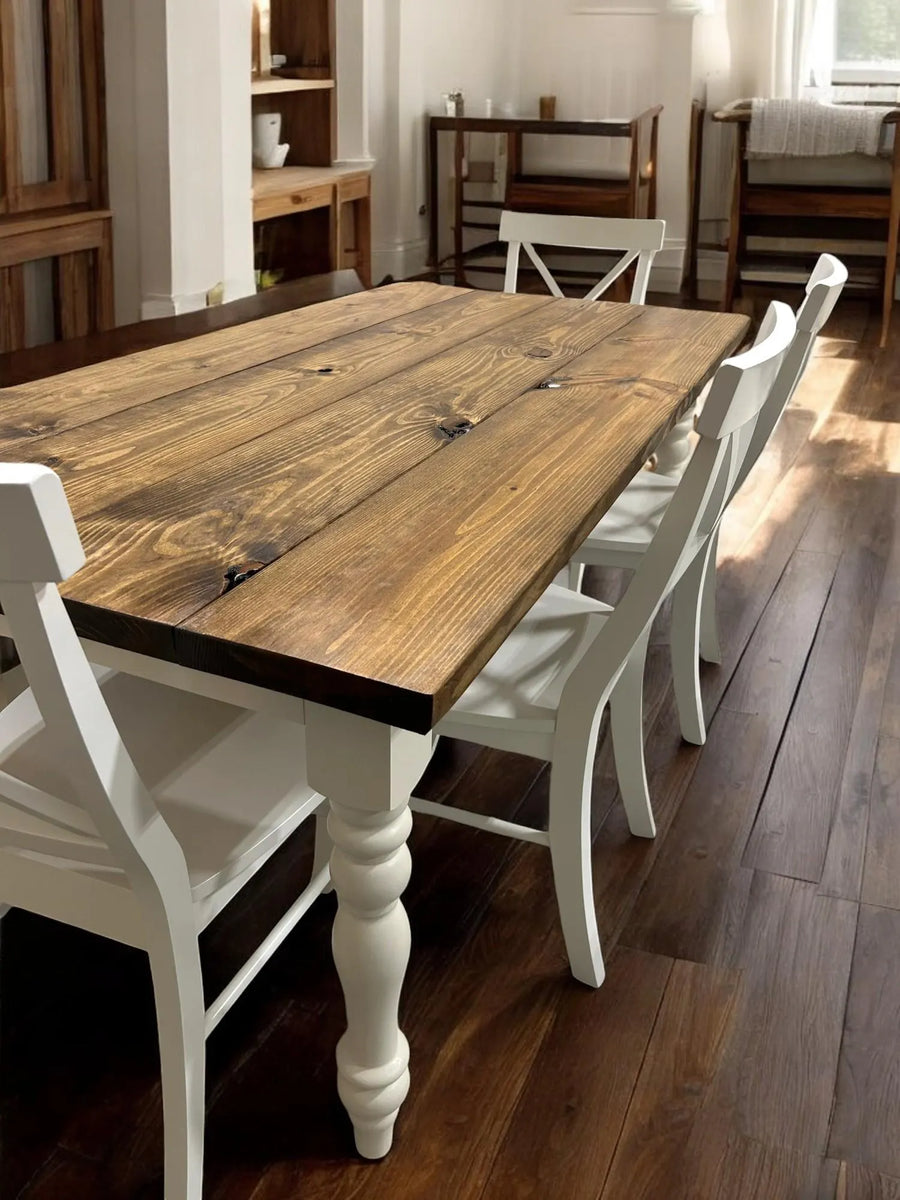Raise Your Eating Space with Classy Dining Table Legs Wood Styles
Discovering the Different Kinds Of Dining Table Legs Wood for Your Eating Space
The option of eating table legs timber can profoundly affect both the useful and aesthetic high qualities of your eating area. Strong wood options, such as oak and walnut, supply a timeless look with unequaled durability, while engineered wood options use cutting-edge layouts that mimic the richness of natural grains.
Solid Wood Options

Unlike engineered materials, solid wood is less prone to warping and damages over time when effectively kept. Each item of strong timber is special, showcasing specific attributes that include to the appeal and character of the dining table.
Furthermore, strong timber can be completed in many methods, ranging from natural oils to stained surfaces, enabling house owners to individualize their furnishings to match their decoration. In summary, selecting solid timber for eating table legs not just makes sure structural integrity but additionally boosts the aesthetic charm of the dining area, making it a rewarding financial investment for any type of home.
Engineered Wood Alternatives

Plywood, built from multiple layers of timber veneer, is stable and particularly solid, making it an excellent choice for eating table legs. Its layered make-up allows it to endure adjustments in moisture and temperature much better than standard solid timber. MDF, on the various other hand, supplies a smooth surface area for painting or veneering, enabling developers to accomplish a polished appearance while keeping architectural honesty.
When selecting crafted wood choices, it is crucial to consider the designated use and wanted aesthetic. These products not just boost the functionality of eating areas however additionally enable for better design adaptability, making certain that contemporary and standard styles can exist side-by-side sympathetically.
Reclaimed Wood Features
Reclaimed timber uses a special blend of sustainability and character, making it an increasingly popular choice for eating table legs. Sourced from old barns, manufacturing facilities, and other frameworks, redeemed wood symbolizes a history that brand-new products merely can not duplicate. Each item carries its own tale, noted by distinct imperfections, knots, and differing grain patterns, which add to a table's unique visual charm.
In addition to its aesthetic appeal, redeemed timber is an ecologically pleasant choice. By repurposing formerly made use of materials, it lowers the demand for new lumber, therefore helping to minimize and preserve woodlands waste. This straightens with an expanding customer preference for lasting practices in home furnishings.
In addition, recovered timber is often much more durable than newly collected timber due to its age. The all-natural drying process that reclaimed timber goes through results in a denser and stronger product, making it less vulnerable to warping and splitting. This boosts the long life of dining tables, allowing them to stand up to the roughness of everyday usage.
Softwood vs. Hardwood
When picking eating table legs, comprehending the differences in between softwood and wood is essential for attaining both useful and visual objectives. They commonly exhibit a more rustic appearance, making them appropriate for country-style or informal eating spaces.
On the other hand, woods, sourced from deciduous trees like maple, cherry, and oak, are renowned for their thickness, toughness, and longevity. The detailed grain patterns and abundant tones of hardwoods supply a ageless and advanced charm, making them suitable for formal dining setups. While hardwoods tend to be extra expensive and larger, their durability versus wear and tear typically justifies the investment.
Ultimately, the choice between softwood and hardwood for dining table legs need to straighten with your design vision, use demands, and budget plan, making sure that your dining area shows your individual design while continuing to be useful over time.

Coatings and Treatments
The aesthetic allure and durability of dining table legs can be significantly improved via various finishes and treatments. These processes not only safeguard the wood from damage however also raise its appearance, enabling it to match diverse interior styles.
One typical therapy is staining, which passes through the wood and boosts its natural grain while including shade. Discolorations provide a rich, sophisticated appearance, making it possible for house owners to match their furnishings with existing style. Alternatively, clear coatings such as polyurethane or varnish develop a safety layer without altering the wood's original color, making sure longevity versus wear and tear.
Additionally, natural oils, like tung or linseed oil, nourish the timber and offer a subtle sheen, all while being environmentally friendly. These oils allow the surface area to breathe, avoiding moisture accumulation and prospective warping.
For those seeking a rustic appeal, weather-beaten or distressed finishes can be put helpful site on create an aged appearance, including character to the item. Ultimately, the choice of treatments and surfaces depends upon personal choice, desired appearances, and the specific timber kind, making it important to take into consideration these elements when selecting table legs for your space.
Conclusion
Finally, the option of table leg materials dramatically influences both the functional and aesthetic elements of a dining space. Strong woods, engineered choices, and reclaimed choices each offer unique advantages, dealing with numerous choices and demands. Recognizing the differences between softwoods and hardwoods, in addition to ideal coatings and therapies, enables educated decision-making. Ultimately, the option of wood kind should line up with preferred style, toughness, and ecological considerations, enhancing the overall dining experience.
The option of dining table legs wood can exceptionally impact both the practical and aesthetic qualities of your dining space - Dining Table Legs Wood. Solid wood alternatives, such as oak and walnut, provide a classic appearance with see this unequaled resilience, more helpful hints while crafted timber alternatives offer cutting-edge designs that imitate the splendor of all-natural grains. Strong timber provides a timeless top quality that can elevate the general design of an eating area. Each piece of solid wood is unique, showcasing specific qualities that add to the appeal and personality of the dining table
Moreover, recovered timber is commonly extra durable than freshly collected wood due to its age.